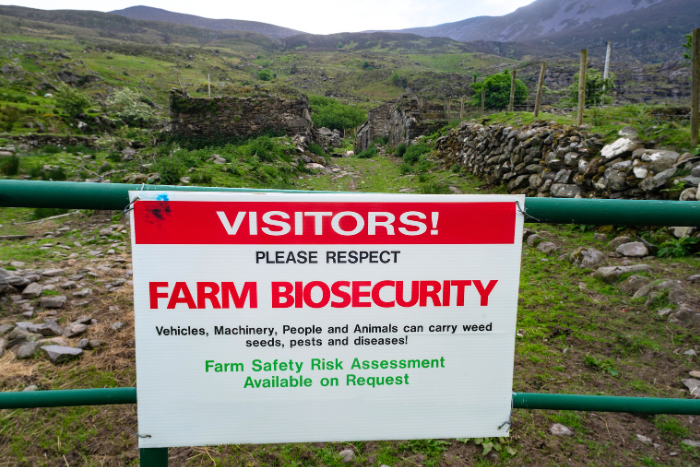They pose major global threats to nature, economies, food security, human health and have played a key role in 60% of global plant and animal extinctions, says new report
With the ease of commute and connectivity we have today, also comes invasive alien or non-native species. A new Assessment Report by The Intergovernmental Platform on Biodiversity and Ecosystem Services (IPBES) called Invasive Alien Species and their Control said that invasive alien species are one of the five major direct drivers of biodiversity loss globally, alongside land and sea use change, direct exploitation of organisms, climate change, and pollution. These types of species include animals and plants that are introduced either accidentally or deliberately into a natural environment where they are not normally found.
Developed over four years by 86 experts from 49 countries, the report drew on more than 13,000 references, and was approved by 143 member states at a plenary.
According to the report, more than 37,000 alien species have been introduced by many human activities to regions and biomes around the world. More than 3,500 of these are harmful invasive alien species, which are seriously threatening nature, nature’s contributions to people and good quality of life.
Why are invasive alien species a cause of concern?
Not all alien species become invasive—they are the subset of alien species that are known to have become established and spread, which cause negative impacts on nature and often also on people. About 6% of alien plants; 22% of alien invertebrates; 14% of alien vertebrates; and 11% of alien microbes are known to be invasive, posing major risks to nature and to people.
While many alien species were historically introduced on purpose for their perceived benefits to people, the report said the negative impacts of those that do become invasive are enormous.
“Invasive alien species have been a major factor in 60% and the only driver in 16% of global animal and plant extinctions that we have recorded, and at least 218 invasive alien species have been responsible for more than 1,200 local extinctions. In fact, 85% of the impacts of biological invasions on native species are negative,” said Anibal Pauchard, Chile, co-chair of the assessment.
The report added that people with the greatest direct dependence on nature, such as indigenous peoples and local communities, are found to be at even greater risk. More than 2,300 invasive alien species are found on lands under the stewardship of indigenous peoples, threatening their quality of life and even cultural identities.
According to the report, in 2019, the global economic cost of invasive alien species exceeded $423 billion annually, which is more than estimates for the global annual costs of natural disasters. Annual costs of invasive alien species have at least quadrupled every decade since 1970, and major drivers of change are predicted to worsen.
Wide ranging impacts
The report found that 34% of the impacts of biological invasions were reported from the Americas, 31% from Europe and Central Asia, 25% from Asia and the Pacific and about 7% from Africa. Most negative impacts are reported on land (about 75%)—especially in forests, woodlands and cultivated areas—with considerably fewer reported in freshwater (14%) and marine (10%) habitats. Invasive alien species are most damaging on islands, with numbers of alien plants now exceeding the number of native plants on more than 25% of all islands, the report added.
Nearly 80% of the documented impacts of invasive alien species on people are negative, especially through damage to food supplies. For example, in lakes in Kerala, India, the Caribbean false mussel (Mytilopsis sallei) has wiped out native clams and oysters, which are important for local fisheries. Originally from the Atlantic and Pacific coast of South and Central America, Mytilopsis sallei has spread widely. Researchers believe that it may have travelled to India via ships, later spreading to estuaries through smaller fishing vessels that travel frequently between coastal oceanic waters and the fishing harbours of Kerala. It’s possible that tropical cyclone Ockhi, which struck the Kerala coast in 2017, may have triggered its spread.

“Invasive alien species can outgrow native species. One example in Kerala is the Lantana (Lantana camara) plant, that can overgrow, not allowing any native species to grow. They overgrow so fast before the native species can think about growing. Most invasive plants produce toxins that are liberated in soil. None of the invasive species are palatable to cattle, who feed on native species. So, the chain of the ecosystem is affected,” said Mahesh Sankaran, professor, National Centre for Biological Sciences.
Not only that, 85% of documented impacts negatively affect people’s quality of life, for instance, through health impacts, including diseases such as malaria, Zika and West Nile Fever, spread by invasive alien mosquito species like Aedes albopictus and Aedes aegyptii.

Invasive alien species also damage livelihoods, for example in Lake Victoria where fisheries have declined due to the depletion of tilapia, as a result of the spread of water hyacinth (Pontederia crassipes), which is the world’s most widespread terrestrial invasive alien species.
With so many major drivers of change predicted to worsen, the report warned, it is expected that the increase of invasive alien species and their negative impacts, are likely to be significantly greater. The accelerating global economy, intensified and expanded land- and sea-use change, as well as demographic changes are likely to lead to increases in invasive alien species worldwide.
The report underscored that interactions between invasive alien species and other drivers of change will be likely to amplify their impacts. Invasive alien plants can interact with climate change, often resulting in more intense and frequent fires.
Need for policy intervention
The report said while 80% of countries have targets related to managing invasive alien species in their national biodiversity plans, only 17% have national laws or regulations specifically addressing these issues. The report also found that 45% of all countries do not invest in the management of biological invasions.
“We have requested the government to frame a policy entirely on invasive species management, but that hasn’t happened yet. In India, when someone spots invasive alien species, nobody is able to identify it and advise the government to manage it. Even prevention measures are not happening. Our biosecurity measures are very weak and need upgrading,” added Sankaran.
According to Sankaran, there needs to be a separate body managing this issue, instead of depending on the Ministry of Agriculture and the MoEFCC, and the governance system should percolate down to ground level officials. In India, the customs office at airports rarely checks if anyone is carrying plants which can carry the risk of invasive species. This is a primary procedure in other countries, Sankaran added.
Researchers said that for almost every context and situation, there are management tools, governance options and targeted actions that really work. “Prevention is absolutely the best, most cost-effective option, but eradication, containment and control are also effective in specific contexts,” informed Pauchard.
Prevention measures— such as border biosecurity and strictly enforced import controls — are identified by the report as having worked in many instances. Preparedness, early detection and rapid response are shown to be effective at reducing rates of alien species establishment, and to be especially critical for marine and connected water systems.
Eradication has been successful and cost-effective for some invasive alien species, especially when their populations are small and slow-spreading, in isolated ecosystems such as islands. When eradication is not possible for different reasons, the report recommended, invasive alien species can often be contained and controlled—especially in land-based and closed water systems, as well as in aquaculture.
About The Author
You may also like
Is pine the real ‘villain’ in the Uttarakhand forest fire saga?
Insects lose ability to fly straight under artificial light: Study
Cyclone Michuang triggers flash flooding along India’s southern coast; 5 lives lost so far
Swinging in the rain: India needs to redefine what a “normal” monsoon looks like
Global ocean warming and rising, growing more acidic: Report


